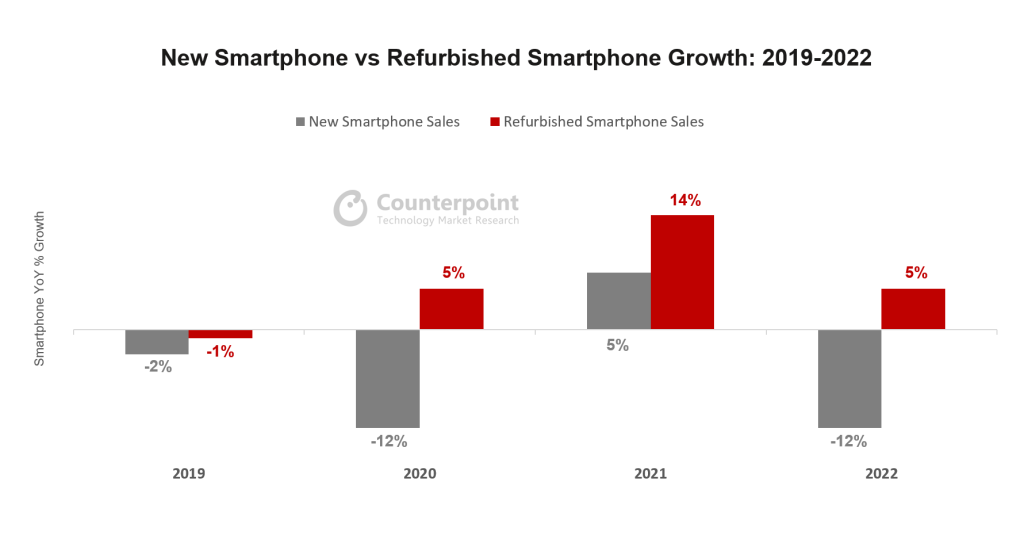Apple excels in selling refurbished phones because of its strong brand reputation for quality and reliability. Apple has a rigorous refurbishing process that includes the replacement of any defective parts with genuine Apple components, thorough testing, cleaning, and repackaging. This process ensures that the refurbished phones are of high quality and function, just like new phones. Apple also offers a one-year warranty on their refurbished phones, giving consumers peace of mind when purchasing. Additionally, Apple’s refurbished phones often come with the latest software updates and can be easily integrated with other Apple products, making them an attractive option for Apple enthusiasts. Lastly, Apple’s marketing and sales strategies effectively communicate the benefits of buying a refurbished phone, which helps to build consumer trust and increase sales. For all these reasons, Apple was the leader in the global refurbished phone market in the year 2022.
COVID-19 affected the Market for Refurbished Devices in 2022
According to Counterpoint Research’s Global Refurb Smartphone Tracker, the global secondary smartphone market grew 5% YoY in 2022, as the demand for refurbished smartphones continued to increase. However, the growth could have been higher if not for the steep 17% decline in China’s refurbished smartphone sales, which was caused by a resurgence of COVID-19 and the introduction of “COVID-Zero” policies in the country.

Apple’s global volumes grew 16% YoY in 2022, taking its secondary market share to over 49%. It is the fastest-growing brand in the used and refurbished sectors globally. However, Samsung’s share decreased to 26% in 2022 from 28% in 2021, mainly due to a small percentage shift of Android consumers to iOS, which affected Samsung refurbished sales.
The demand for refurbished smartphones is mainly coming from new smartphone buyers in mature markets, feature phone users shifting to smartphones in emerging markets, and unofficial channels dependent on C2C or hand-me-downs. Meanwhile, refurbished smartphone retailers are growing the most in terms of supply, while carriers have started offering refurbished options mainly in mature markets.
In 2022, a larger share of consumers preferred to buy premium and flagship refurbished smartphones compared to previous years, pushing up secondary market ASPs (average selling prices). The trend is expected to continue in 2023, along with an increase in 5G smartphone share, which could bring about a situation where the inventory of low-grade used smartphones may grow significantly.
Overall, the limited supply of refurbished smartphones is affecting most emerging markets like LATAM, Southeast Asia, India, and Africa. However, the business potential of dealing in refurbished smartphones remains high, as trust levels towards them have increased across markets, and consumers are shifting their focus towards sustainability and environmental awareness.
RELATED:
- iPhone 15 Pro Max Camera Leaked – The Standard 15 Pro May Not Be Professional Enough
- Apple iPhones owners are being locked out of their stolen phones by thieves
- Best Apple Watch Bands 2023
(Source)







